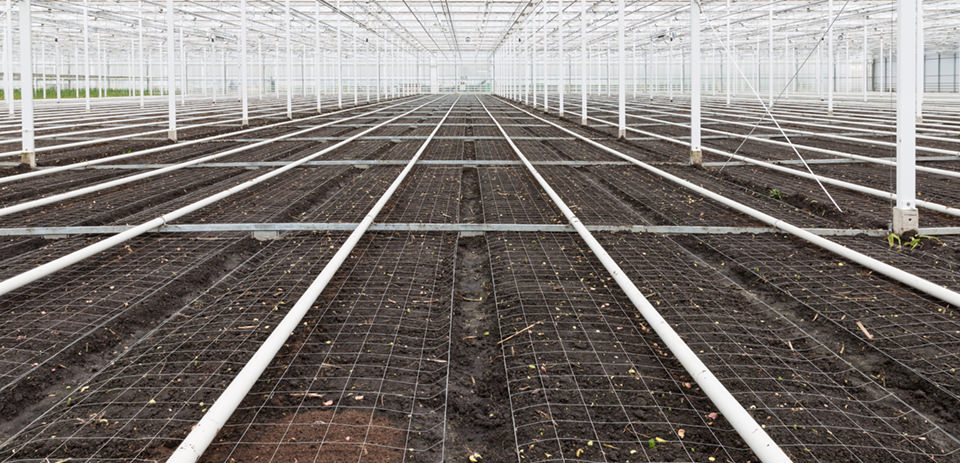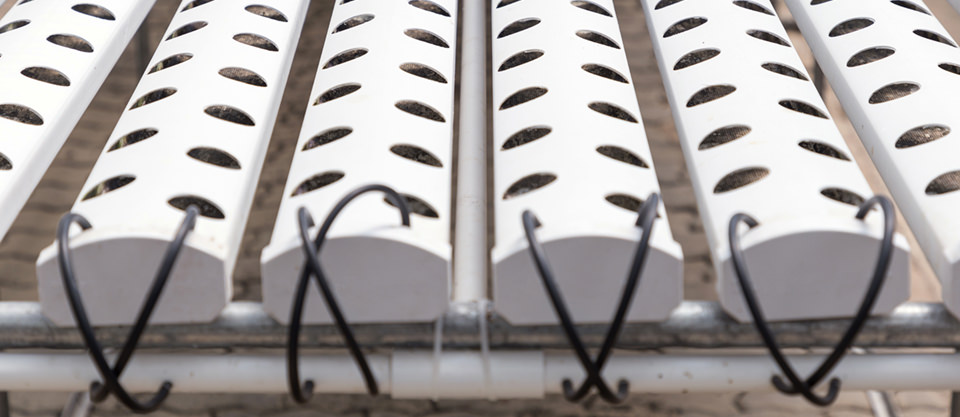Cleanup and Sanitation, 8 Tips to Get Your Greenhouse Ready for Spring
Growers are familiar with spring cleaning as the greenhouse is nearly empty during the short period before spring sowing. Thus, spring cleaning is more prevalent in cold winter. Cleaning and sanitizing the greenhouse between the crop cycles is a good way to eliminate the issues and get ready for the next cultivation. Problems like pets, diseases and algae can be reduced or solved with the spring cleaning. For commercial and large scale greenhouses, the greenhouse and equipment serve production almost year-round. After a long term working period, it is also a good chance for repairing and maintaining greenhouse structures and equipment. But how to best clean a greenhouse? This post will show you 8 tips for the winter cleanup and sanitation to get your greenhouse ready for spring.

-
Repair greenhouse structures
Firstly, checkup your greenhouse structures and repair the damaged structures at once. Just walking through the greenhouse and check whether there are broken windows, teared screening, torn plastic, etc. If you found former issues, repair them as soon as possible. These damaged structures may destroy the precisely controlled environment and expose the crops to harsh outdoor environment in the next cultivation. Without the optimal growing environment, you may only get lower production and yields. Except for the negative effects, the damaged structure may also cause serious pets pressure, because pets can enter the greenhouse through leaks of the greenhouse structure.
-
Maintain greenhouse equipment
A lot of greenhouse equipment used for keeping the optimal environment for crop growth, such as the cooling system, ventilation system, blackout and shading system, and LED grow lights. Cooling system and ventilation system are critical for remaining suitable temperature and humidity for crops. LED grow lights play an important role in providing sufficient light for crops. We have a previous post about how to maintenance LED grow lights, click here for details. Make a careful inspection of the equipment and maintain the equipment if needed. Maintaining greenhouse equipment before moving to spring cultivation can make sure the equipment is functional. If existing equipment like traditional grow lights cannot meet your needs, you had better replace them to LED grow lights.
-
Toss out weeds, debris, and other undesired items
Weeds can quickly adapt the greenhouse environment, and then compete for the food source with crops. Crop growth will be limited without adequate nutrient. Crop debris included the old crops, discarded fruits, dead crops, leaves, etc. Other undesired items, such as the broken pots, occupy and waste the greenhouse space. But what make it worse, weeds, debris, and other undesired items allow pests and diseases get into your crops. They provide shelters and homes for pests and diseases. Once the pests and disease spread in the greenhouse, it is very hard to control. Therefore, weeds, debris, and other undesired items should be moved out of the greenhouse and cleaned. Even the weeds, debris, and other undesired items around the greenhouse has a high risk of resulting pests and diseases issues.
-
Cleaning containers and greenhouse surfaces
It is not difficult to understand that containers (or pots) and greenhouse surface should be thoroughly cleaned. Containers also are the ideal shelter for pests and diseases. Root debris or soil particles in containers are the common growth media for crop pathogens to survive. Since the following crops are easy to be infected by the pathogens exist in containers, avoid reusing the container that has planted the crop with disease. For the containers do not have the disease problem, remove the debris and soil particles for carefully washing and disinfecting. Similarly, other greenhouse surfaces including floors, sidewall, benches, etc, should be cleaned and sanitized. Sweep, brush, wash, and sanitize all greenhouse surfaces conscientiously.
-
Managing algae
Well, algae flourish in a warm, moist, and fertile environment. It is a good time to managing algae in the cold winter. Algae normally thrive on water pies, floors, covers, benches, and pots. Overpopulate algae can not only pollute the water but also clog the irrigation. Furthermore, the algae covered on the floor makes the floor slippery. People are at the high risk of falling when they walk on the slippery floor. However, disadvantages of algae do not end there. It is the food source for pets as well. To manage algae and clean algae off the greenhouse, you should avoid over-watering and over-fertilizing. You can also use disinfectants frequently to clean and disinfect the place where algae grow on.

-
Pets and diseases control
Pests and diseases can significantly reduce the production and yield, causing great profit losses. As mentioned before, managing weeds, debris, undesired items, containers, greenhouse surface, and algae are effective for minimizing pets and diseases. Preventing pets and diseases works better and costs less than treating the problem. As a consequence, pet and disease control is critical during the spring cleaning. Pay attention to items with rough surface (like wood benches) because they can harbor pets and disease. Disinfect all the places the items that have the risk of pet and disease problems. Except for cleaning and disinfecting greenhouse inside, you should also note the infection from outsides. Setting up a cleaning station at the entrance of greenhouse to clean the hand and foot of growers or employees.
-
Sanitize equipment and tools
It is imperative to sanitize the equipment and tools that may touch your crops. There are two reasons for the necessity of sanitizing equipment and tools regularly. Firstly, some equipment and tools like knives and trolleys are often taken in and out the greenhouse. These items may bring pathogen into the greenhouse and cause diseases. Secondly, equipment and tools may be reused after serving crops have pest or disease problems. The healthy crops will be infected through equipment and tools. A cleaning station is necessary for cleaning and disinfecting equipment and tools before taken into the greenhouse. In addition, disinfect the pruning tools at least once every 10 crops.
-
Inspect and restock the inventory
As mentioned, prevention costs less than treatment. Review your inventory and check the incoming material before busy seasons. Otherwise, it will be too late to purchase new materials. For example, weeds, pests and diseases can spread in a greenhouse speedily. If you do not have pesticides and herbicide in inventory, weeds will flourish and crops will be destroyed by pets and diseases. Thus, inspect and then restock your inventory before the next season. Don’t forget to check incoming materials regularly. Make sure you have enough production and shipping material for the busy season. This helps to improve the efficiency of production and shipment.

